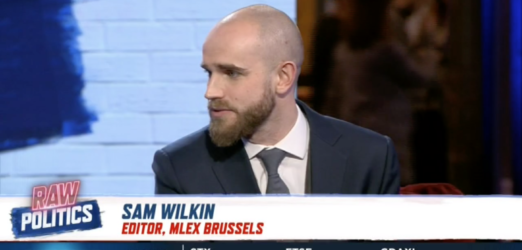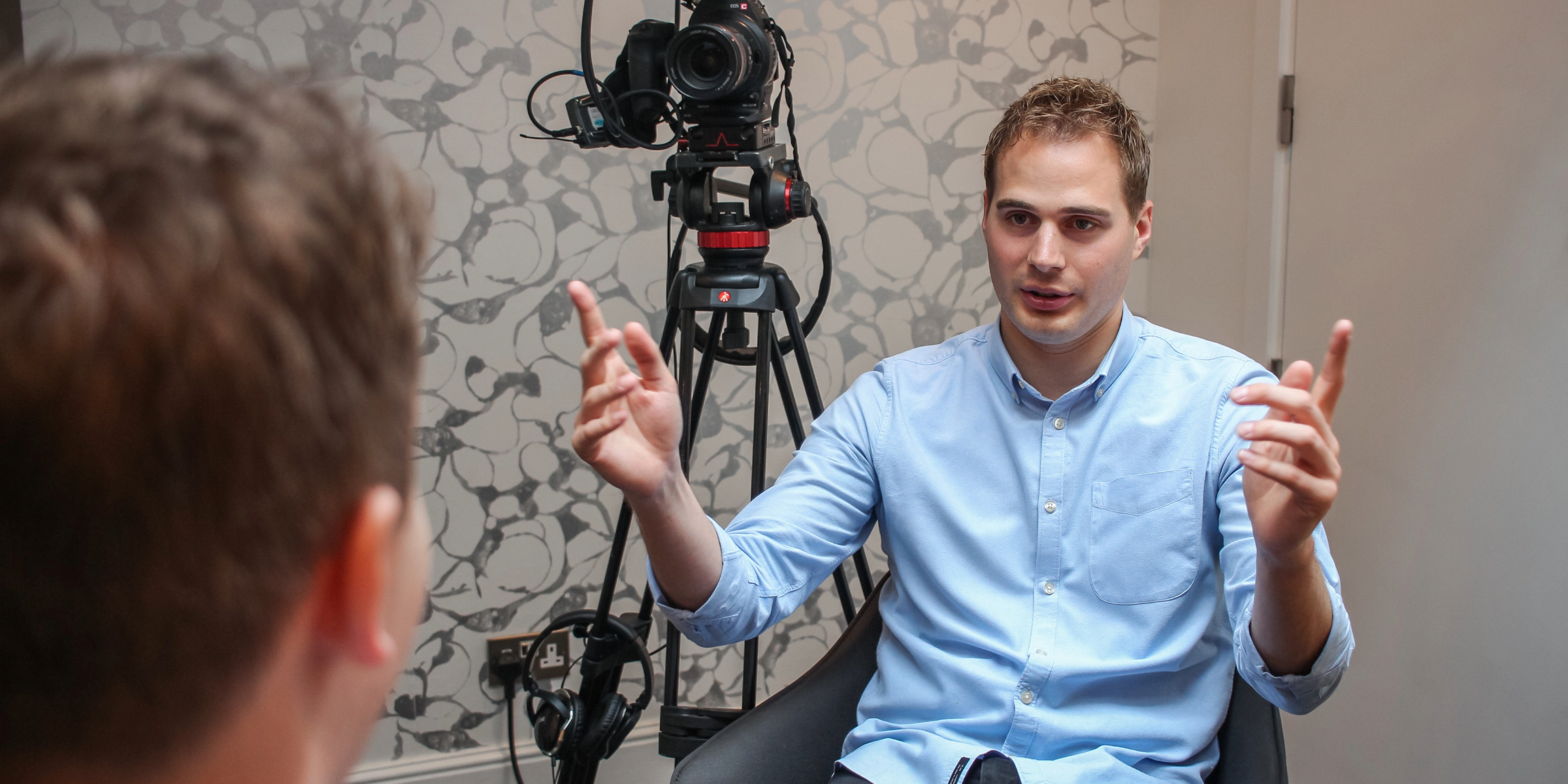The two main reasons for media training a broadcast spokesperson
By Keren Haynes, Media Trainer
There are two main reasons for media training a spokesperson ahead of a broadcast PR campaign and they are equally important. The first is to satisfy the journalist with the content they seek; the second is to communicate key messages as part of a PR driven story. Achieving one without the other makes the exercise pointless.
Both parties, the broadcaster and the brand, stand to gain if you manage to find that balance, but it isn’t easy! That’s why we believe media training is the best foundation for those hard-won, far reaching broadcast opportunities.
What a journalist wants from a spokesperson
Broadcast interviews are either live or pre-recorded and each requires a different set of skills. Both will last a few minutes or more, but with the pre-recorded interview only a short soundbite or grab is likely to end up on-air. The live interview is often used to provide analysis and more detailed background to a story. A soundbite, taken from a pre-recorded interview is more intended to be a short, sharp summing up of a particular opinion or view.
The journalist will generally have a very clear idea of the content they’re looking for from an interview. Often a radio or television news story will feature more than one soundbite or guest, therefore each interview needs to complement the next. Television is about entertainment, hence the need to pitch opposing ideas against each; the journalist therefore wants each contributor to have a strong opinion. It’s so much less interesting if everyone sits on the fence!
On occasion a spokesperson’s role is to explain a story – they’re there to provide context to a story in an analytical way. For these sorts of interviews, the spokesperson needs to be authoritative and informative. They’re being positioned as an expert, so the viewer or listener has to find them credible. Our expert spokesperson training courses can help prepare anyone to convey a clear and concise message in interviews.
How to present yourself for broadcast interviews
With television the impact a spokesperson makes is governed primarily not by what they say, but how they say it and look. First impressions count, and often the first impression a viewer of TV news will get of a spokesperson is what they are wearing. Knowing what to wear is just as important as being able to speak confidently. An interviewee must be presentable and how that manifests itself depends on what sort of organisation or company they represent. You’d expect a FTSE 100 company representative for example to be suited and booted, but such an appearance may be inappropriate for a charity spokesperson, or a new tech start-up. The presentation of a spokesperson can say just as much about your brand as key messages.
At the risk of sounding like a make-over artist, you also need to think about fabric colours and patterns. Nothing too fussy – you don’t want to distract anymore from what you’re saying and particularly close patterns or stripes can strobe, meaning they appear to move on screen. As a generalisation, most people suit pastel colours. Avoid all black (it will make you look two dimensional under the bright lights of a studio) or all white (which dazzles), but a little bit of either is fine. And as a general rule stay away from green; this video ably demonstrates why: a tour of BBC Sports’ new studio by presenter Dan Walker, during which he shows what wearing green on a virtual reality set can do….
Finally, to keep a journalist happy a spokesperson must be willing and available. Television and radio works at a fast pace and when presented with a broadcast opportunity you need to be quick. There is no time for procrastination! A journalist won’t just ask the one spokesperson for an interview, they’ll put several requests in and often go for the one that comes back first.
PR branding on radio and television
So, there you have it, a happy journalist. But what’s in it for the corporate spokesperson and their brand? The broadcast journalist will always be wary of the commerciality of the story. Both BBC and commercial TV and radio stations are governed by OFCOM; the BBC has its Producer Guidelines bible to adhere to and commercial stations need to keep their advertisers happy (which they won’t be if other brands are seemingly getting a free plug editorially). What then, when it comes to branding, is acceptable?
Our feeling is that one mention, be it audible or visual, is success. Two mentions, if done in a relevant way, is also acceptable to most journalists. For television that might be a visible credit on screen (perhaps an aston with the company name or as part of a graphic), alongside a mention as part of an interview. The spokesperson needs to weave the mention in so the viewer or listener doesn’t think it’s a blatant plug. “The research by Company X shows how prevalent this problem is….” Branding needs to be equally seamless on radio.
The BBC used to seem more averse to branding than commercial stations, but these days all broadcasters seem equally keen to avoid it. Knowing where and when to place a brand mention is a must. Too many mentions and you risk annoying the journalist to the extent your story will be dropped and you’ll never be invited to return again.
Preparing for interviews
Whether on radio or TV, there is no going back with a live interview. If you stumble on your words or need to pause and re-phrase with a pre-recorded interview you can, but with a live interview you just have to keep going!
Given a choice we would always recommend accepting a live interview over a pre-record. It may be more daunting but you’ll get longer on air and if you work a key message or brand mention into the interview it’s not going to get cut out. With a live interview, because you never know how long you’re going to get on air, always try and get your main key message into the first or second answer.
That depends on the question, you say. But you can answer a question then slip a key message in too. We use a technique called ABC:
Acknowledge the question.
Bridge – find a form of words that will help you weave your answer on to a different topic. “What’s really important to us……what I can say is…..”
Change to a subject you really want to talk about.
Pre-recorded interviews are arguably less pressurised than lives, but more challenging in that you have less control about what will go out on-air. The skill here is to weave in your key message multiple times, in the knowledge only one answer will ever get used.
There is one more type of interview that can be both live or pre-recorded, on radio and television; that is a down-the-line interview. In radio, this is often conducted via a mobile or as part of one of our radio days over an ISDN line in our studio. But in TV it often means a spokesperson talking directly into a camera in one studio whilst being interviewed by a journalist in another part of the country. Most spokespeople find this difficult as you have no visual eye to eye contact to gauge when to start or stop talking. Practice for this is highly recommended for obvious reasons. Shout! Communications offer both TV interview training and radio training.
Prepare yourself
If you are speaking in front of the media, you need to be prepared. That includes in-depth knowledge of the story you have been pitched for but also an awareness of any other relevant stories in the day’s news. Broadcasters think nothing of taking advantage of a guest in the studio, or down the line, to throw in an extra question, especially if it’s on a breaking story and they’ve not yet had time to sort a guest.
There is nothing worse than watching an interview with a spokesperson who hasn’t done their homework or doesn’t know how to change tack on a difficult question without obviously dodging it. That is why we focus on preparing you for real broadcast interviews with our spokesperson training courses in London, custom designed to your needs for the opportunities you’re most likely to get.
If you have an upcoming broadcast opportunity or campaign and would like to book some media training, give us a call on 02072407373 to discuss how we can help you.



